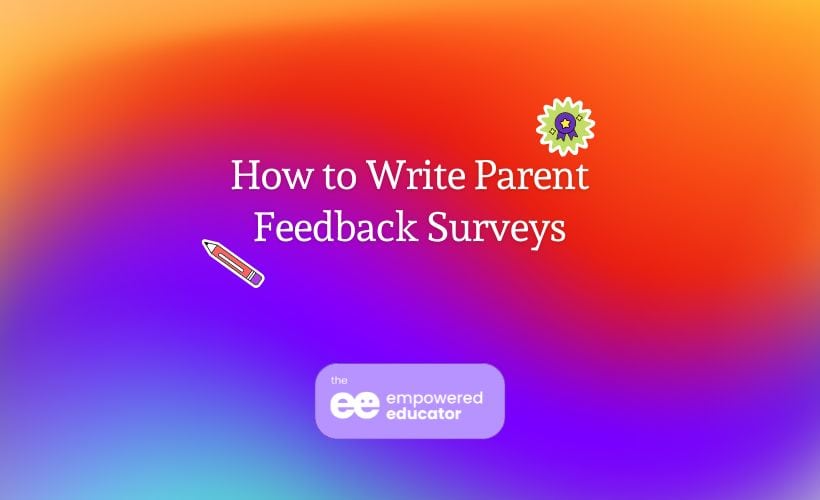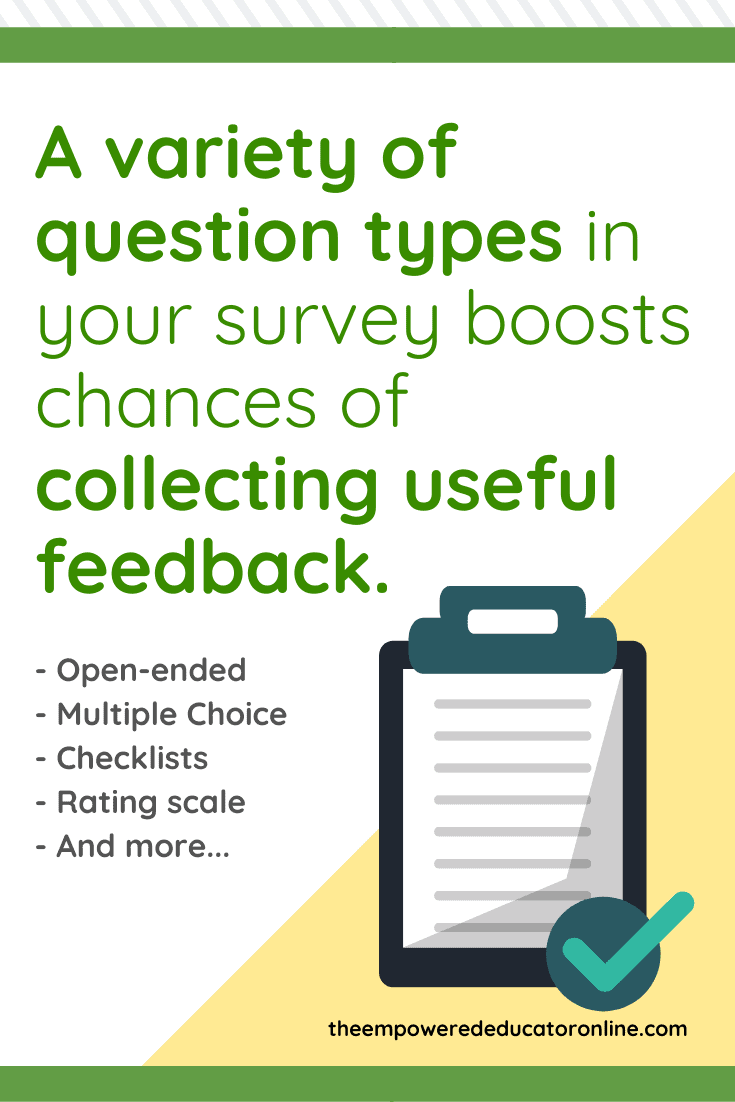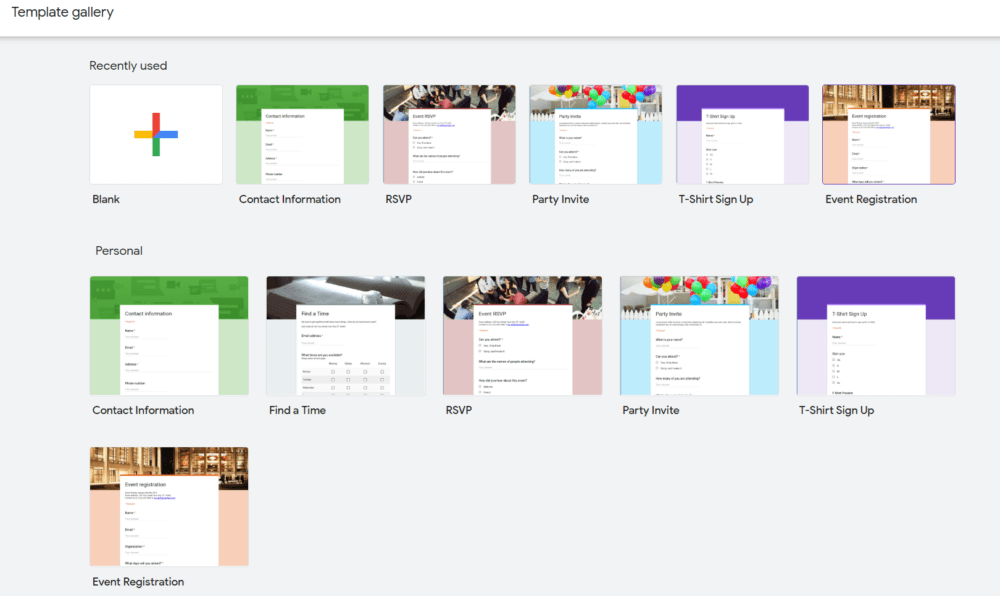Have you ever thought about using a parent feedback survey to collect input from parents using your early learning service but then tossed the idea into the too time consuming or too hard basket?
Or perhaps you use them regularly as a way to show evidence that you are offering opportunities for families to ‘contribute to your service’...but you don’t really do anything with the information you collect other than file it in a folder and pull it out on an assessment visit?

Maybe you are already confidently using surveys and the information they provide in a number of different ways but would like to review your process to make it more meaningful yet less time-consuming.
No matter which stage you are at right now this article will give you the information you need to:
Not sure where to start? Let’s go through this together step by step...I promise not to have you running for the chocolate so stick with me Empowered Ed!
How to Use Parent Feedback Surveys in Early Childhood Services
Collecting data from families using your service can seem daunting but it’s important to remember that you are not just ticking off a box because the Early Years Learning Framework (EYLF Australia) asks you to. You also want to use the information you collect to inform your ongoing quality improvement and service delivery.
There are, however, many other ways that using parent feedback surveys can be useful to educators and early years services that you might not have thought about - I’ve listed just a few for you below to help you think outside the ‘outcome’ box a little.
Family Feedback Surveys:

“We all need people who will give us feedback. That's how we improve.”
Bill Gates

So we can see that collecting information via a survey process can be valuable and offer a wider scope than just providing you with ‘evidence of parent input’ but I’m not saying it’s always an easy process! Let’s take a look at some of the common challenges to using surveys so you are more aware and can feel prepared BEFORE you survey. This preparation will most likely lead to your survey responses offering more valuable and useful information in return!
Possible Challenges When Using Parent Feedback Surveys in Early Years Settings
You now know WHY & HOW feedback surveys can be useful and are aware of some of the challenges you might need to overcome, but how can you just get on with it and get that parent feedback rolling in?
I’ve put together a step by step process you can follow….or modify to create your own process better suited to your unique early learning setting and community.

5 Simple Steps to Using Parent Feedback Surveys
- 1Define the questions you want to use - what do you want to find out and what types of questions will you use in your survey?
- 2Decide on the format or tools you will use to create and deliver your surveys and how to keep track of whether all families have received a notification via their preferred communication system (I’ll tell you why just offering one option is never going to work when surveying parents shortly!)
- 3Ensure you have a process in place to collect answers as they come in. Are you collecting them by hand, email, asking parents to drop them into a box or envelope you provide or via digital responses? Who will collect answers from the different streams you are using. Where will they be stored? How will you communicate a closing date to parents? Do you have a reminder strategy in place to help you receive the most responses possible?
- 4Know beforehand how you will analyse the information and feedback you receive - will you budget to get some outside support to do the sorting and collating of data to make it more user-friendly and save you time or do you plan to analyse the information yourself? Is there someone in your service or team who could help or collaborate with you on this? Will you use a spreadsheet, simple word document or pad and paper to show the initial information collected?
- 5Decide how you want to share what you have learnt and the actions and goals that have evolved from this survey with both staff and families. What methods will you use to share the information so everyone has the opportunity to engage?
When can Educators use Parent Feedback Surveys?
There are no rules here - all I will say is that you want to first think about your WHY first - what do you want to know and when would make the most sense for you to collect this information. You will be using other family communication tools and strategies (hopefully!!) so you want to be mindful of not overwhelming parents with forms and feedback requests or it will just become background noise and you won’t receive the valuable information sharing you are looking for.
I like to use parent feedback surveys at these 3 stages of the year:
What Tools & Delivery Methods to Use for Parent Feedback Surveys?
Hard copy or digital? It can be difficult to know what will work best for a service and their family community so I suggest trying both methods for the first few times then make a decision on what method regularly gives you the most valuable feedback to analyse.
However, for most early childhood services I recommend offering both options to parents especially if you are aware that not all of your parents have consistent access to the internet or digital devices.
Also consider introducing an option that allows the use of a more visual format if the service has a high number of Culturally and Linguistically Diverse (CALD) families or you want to engage with and provide survey options for younger children (3- 6 yrs).
Types of Survey Tools
Digital
Hard Copy
If you want to save yourself some valuable time then it can be very useful to set up and deliver a simple parent survey via online forms and tools. They are very easy to use and the free versions are all most services and educators will need so it’s a budget-friendly option too!
3 of the easiest digital tools to use online at the moment are:
- Survey Monkey (my fav!)
- Google Forms
- TypeForms
If you set up and deliver your parent survey online it will save you time and stress if you decide the following before you begin:
If you are currently a Subscriber to my Empowered Ed Member Hub and want a step by step guide to setting up your survey using SurveyMonkey you will find a simple walk-through video in your toolbox training section. Not yet a member? Join us here!
If you do prefer to work with hard copies or want to add it in as an additional way that parents can access your survey (which I recommend you do!) then you might want to try one of the following...
3 of the easiest hard copy tools you can use are:
- Word Document
- Powerpoint or Publisher Design/Document
- PDF Document
Just type your questions in, do some simple formatting and perhaps add in some images to make it more appealing then print ready to hand out or alternatively you could also email to parents (Word or PDF docs) or add to newsletters.
If you choose to use one of the hard copy options you will want to consider the following:
If you are not sure how to complete the steps and create your first online or hard copy survey form or just don't have the time to create a survey form from scratch you can use my editable survey templates inside Member Hub. Just modify questions to suit your own service type and community then save, print or email!
What types of questions work best for parent surveys and help you to collect meaningful information you can use moving forward?

It is a good idea to include a variety of question types in your survey to give you the best chance of collecting useful feedback.
Why? Because you will find that some people only have time to check a box, others find multiple choice questions with their variety of answers easy to complete and others enjoy writing down more comprehensive answers and feedback to answer open-ended questions.
So your parent feedback survey could include any of the following 'types' of question formats. It's up to you to decide how many of each type to use within your survey.
- Open-ended
- Multiple Choice
- Checklists
- Rating scale.
- Order ranking.
- Choose an image or emoji
- Dropdown answer choices.
- Star ratings
- Simple comment box for open-ended feedback.
- Drawing boxes (for children)
I show you how to set up many of the options above in the Survey Monkey tutorial video inside The Empowered Educator Member Hub.
How Long Should a Feedback Survey Ideally Take for Parents to Complete?
The more questions you ask, the less time your respondents will often spend on the answering part so keep it brief! You don't want them just 'speeding' through your survey to get it done and marked off their ‘to do' list.
Your aim should be to receive meaningful and reliable answers to your questions. In my experience, people tend to take more time answering questions on a shorter survey when compared to a longer survey - but this isn't always the case so why not test drive a few options first?
In general though, we know as educators that it can be difficult to hold a busy parent's attention for long, so when creating surveys I suggest aiming for people to be able to complete them (without rushing) in under 5 minutes - This usually relates to using 10-12 questions at most using a mix of open-ended question boxes, multiple-choice and ranking questions.
"When someone can complete a survey in under 5 mins, it lessens the risk of them taking a quick look then abandoning the survey as they decide it looks too difficult or time-consuming to answer!"
The Empowered Educator
20 Strategies That Will Increase Response Rates to Parent Feedback Surveys
- Assign a parent liaison to help encourage parent participation and answer questions.
- Keep it short and easy to read!
- Send an email notification (or note home in child’s bag) telling parents you will be sending out a survey soon.
- Explain what the goal of this survey and HOW their input will be valuable to both the service and their own child’s learning.
- Describe how you plan to use and share the feedback gathered.
- Consider offering an option to remain anonymous so parents and carers feel more secure answering.
- Show a progress bar on digital versions.
- Send out 1 or 2 reminders before the survey closing date.
- Don't ask questions you already have answers to ‘just to show evidence’.
- Don't use terms and framework 'jargon' that parents can't understand or may find frustrating.
- Try not to include too many open-ended questions or the survey will become tiresome and time-consuming.
- Consider offering an incentive to participate like going into the draw for a raffle prize or similar.
- Create a visual and easy to read cover letter for your hard copy survey form.
- Express your appreciation that they are taking the time to answer. " We want to know what you think".
- Give an estimate of the time it will take so they can plan ahead. "Please take 5 mins to complete our quick survey'
- Don’t include mandatory ‘must answer' fields.
- Allow the choice to skip questions.
- Ensure the digital tool you use can be read easily on a mobile device and allow responses via phones.
- Share your results and future goals for utilising the information.
- Create a separate visual version for children to complete with their parents’ help.
How Can Early Childhood Services Use The Information Collected From Parent Surveys?
- To better understand the opinions and perspectives of their parents.
- To make improvements to the learning environment.
- To spark discussions with parents.
- To improve family retention and lower vacancy rates.
- To highlight areas requiring improvement
- To provide opportunities for recognition, motivation and empowerment.
- To inform future planning and programming and learning outcome areas to focus more attention on.
- To help plan marketing and promotion strategies - especially going into a new year.
- To show evidence of reflection and how educators are using this information.
- To identify preferences for family communication methods.
- To better support parents families in their parenting role.
- To show evidence of how your service offers parents the opportunity to be involved and contribute to your service.
- To provide useful information to reflect on and add to your Quality Improvement Plan (QIP).
5 Simple Ways to Share Your Survey Findings with Parents
Once you have collected your survey responses and analysed the information you have received (graphs are a great way to provide simple visual analysis!) you will want to share some of that information with your families in an easy to understand, quick to digest format.
The Empowered Educator
Some options could include:
- Snippets of info and images in newsletters.
- Infographic Images.
- Face to face chats.
- QIP Visuals
- Display boards
- Images with text cards for context
- Share in emails to parents.
- Share posts in your private family communication Facebook groups.
- Show evidence of new resources purchased and how the survey feedback led to the purchase.
- Focus displays covering information received from just one of the questions or focus areas included in the survey.
Please don't be tempted to just send out pages and pages of text covering every single statistic and answer analysis you have completed! I don’t know about you but when I receive one of those I already know I am never going to find the time to read through it all.
Why? Most likely because:
So, what I'm trying to say in my not so subtle way is MAKE IT USEFUL AND MAKE IT INTERESTING to ensure parents see that the time they spent answering the questions was well spent and they are more likely to participate again in future surveys!
Sharing your results is a valuable step in helping parents understand the importance of their participation and time so don’t attempt to skip this step - just make sure to keep the sharing simple but consistent.
Using information taken from survey responses provides valuable opportunities for continued improvement, growth, evidence and the strengthening of partnerships between parents, children, educators, community and services.
Don't procrastinate on sending out a parent survey just because you haven't done one before or you previously only received a few responses... because you now have the strategies and tips to not only get one out quickly but also ensure it's not a waste of your valuable time!
Let me know in the comments below if you prefer hard copy or online digital surveys!


A Little About Me

Jodie Clarke is an early childhood professional supporting educators who want and need to stay passionate about the work they do! She has 30 years hands-on experience in the early childhood and human services sectors across many different roles.
Jodie is mum to 3 in Australia and has already helped thousands of educators with their work through her popular blog posts, activity ideas, online training and e-books.


Well put together article. Nice work.
how can I download the cheat sheet?